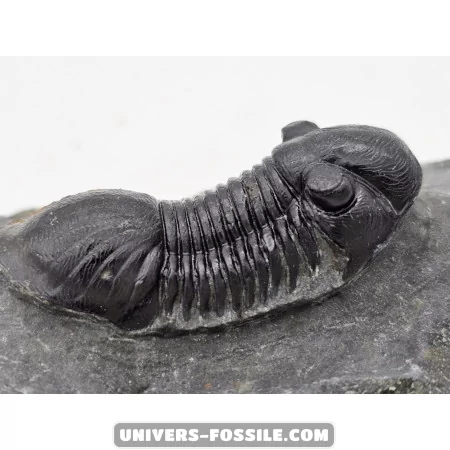Paralejurus spatuliformis - Trilobites | Biodiversity and Evolution in the Middle Ordovician Period

Paralejurus spatuliformis: An Amazing Trilobite
Paralejurus spatuliformis is a species of trilobite that lived during the Middle Ordovician period, approximately 470 million years ago. This fascinating trilobite has been discovered in marine deposits from various parts of the world, including Europe and North Africa.
Paralejurus spatuliformis is characterized by its elongated, flattened body, with a distinct head bearing large compound eyes and sensory antennae. Its exoskeleton was composed of distinct segments, providing it with some flexibility to move along the seafloor.
Habitat
Fossils of Paralejurus spatuliformis have been found in shallow marine environments, indicating that this species preferred coastal waters. They likely inhabited the seafloor, feeding on organic debris and small organisms.
Lifestyle
Like most trilobites, Paralejurus spatuliformis was likely a benthic predator, moving slowly along the seafloor in search of prey. Its robust exoskeleton provided some protection against predators and harsh environmental conditions.
Scientific Significance
Paralejurus spatuliformis is important to paleontologists as it provides valuable insights into the evolution and ecology of trilobites during the Middle Ordovician period.
Paralejurus spatuliformis
Explore the fascinating world of trilobites with Paralejurus spatuliformis, a species that thrived during the Middle Ordovician period. This unique trilobite offers valuable insights into the biodiversity and evolution of marine organisms in ancient seas.
During the Middle Ordovician period, marine ecosystems were teeming with life, and Paralejurus spatuliformis was a key player in this diverse community. Its well-preserved exoskeleton provides scientists with important clues about the past and helps reconstruct the intricate interactions between different species.
Why Study Paralejurus spatuliformis Fossils?
The fossils of Paralejurus spatuliformis offer a window into the past, allowing researchers to unravel the mysteries of ancient marine life. By examining the unique anatomical features of this trilobite, paleontologists can piece together the evolutionary puzzle that has shaped our planet over millions of years.
Conclusion:
Paralejurus spatuliformis is a fascinating trilobite that testifies to the richness of marine life during the Middle Ordovician period. Its well-preserved exoskeleton and unique anatomical features make it an important subject of study for paleontologists worldwide.
By studying fossils of Paralejurus spatuliformis, scientists can learn more about the history of life on Earth and the evolutionary processes that have shaped our planet over millions of years.
